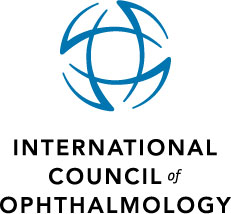|
||||||||||||
Optic Nerve Head Edema Followed by Atrophy in Maxillary Paranasal Sinusitis (Colour Fundus Photography, OCT, MRI, Perimetry)العصب البصري -> إعتلال العصب البصري -> إلتهاب العصب البصريPatient: 50 years of age, male, BCVA 1.0 at OD, 1/20 at OS, IOP 13 mmHg at OD, 15 mmHg at OS.
Ocular Medical History: in October 2012 first visit, suffered from decreased vision since 2 weeks with an edema of the optic nerve head at OS.
General Medical History: in October 2012, 14.000 leucocytes, MRI revealing maxillary sinusitis at left side, followed by maxillary surgery next day .
Main Complaint: loss of vision at OS.
Purpose: to present optic nerve head edema followed by atrophy as a consequence of maxillary sinusitis.
Methods: colour fundus photography, SD-OCT (Heidelberg Engineering), MRI (SiemensTrio), w-w-perimetry (Octpus G1).
Findings:
Colour photography, in October 2012: presenting an unilateral optic nerve head edema with a parapapillary bleeding at 7h at OS
SD-OCT, in October 2012: showing an edema of the optic nerve head at OS.
MRI, in October 2012: depicting a complete complete filling of left maxillary and frontal sinus.
W-w-perimetry, in November 2012: presenting a deep and large scotoma at OS.
SD-OCT, in March 2013: showing a decreased retinal nerve fiber layer at OS, and no edema of optic nerve head.
Colour photography, March 2013: presenting an unilateral optic nerve atrophy with a pale rim at OS.
Discussion:
The visual loss in presented case may be attributed to involvement of the intracanalicular or orbital apical segment of the optic nerve. Extension of sphenoethmoiditis into the orbital apex may result in visual loss, but minimal signs of orbital pathology such as proptosis, chemosis, or lid edema. Patients with symptomatic acute sphenoethmoiditis involving the posterior ethmoid and/or sphenoid sinuses are at a high risk of permanent visual loss. Ergene et al. (1) reported the frequency of paranasal sinus inflammatory changes on brain magnetic resonance imaging obtained from 23 patients with new onset acute optic neuritis. He found, that the distribution of paranasal sinus inflammatory changes in optic neuritis was maxillary 83%, ethmoid 4%, frontal 9%, and sphenoid 4%.
Literature:
1) Ergene E, Rupp FW Jr, Qualls CR, Ford CC: Acute optic neuritis: association with paranasal sinus inflammatory changes on magnetic resonance imaging. J Neuroimaging. 2000 Oct;10(4):209-15. -------------------------- -------------------------- -------------------------- -------------------------- -------------------------- -------------------------- -------------------------- -------------------------- -------------------------- -------------------------- -------------------------- -------------------------- |
||||||||||||





